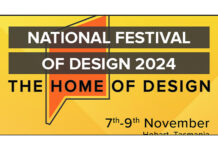There’s no doubt digital marketing – and social media in particular – is the choice of marketers across all industries. Its immediacy, ability to be targeted and tracked, and interactive format has transformed the way marketing works and, specifically in the design and renovation industry, has provided a number of unique ways to find customers.
All marketing needs to address and engage with customers at all stages of the sales process and your messaging needs to consider whether you are talking to a cold, warm or hot audience. We often hear the complaint that social media hasn’t generated enough leads or enough of the right type of leads. So, it’s important to think about how lead generation works specifically in the renovation sector.

In the renovation market, social media will rarely guarantee you a sale. If you were selling a toothbrush or some other low-cost, low-risk item then, sure, you could make sales through Facebook. But a renovation is a huge undertaking, particularly for homeowners with little or no experience with renovating. So, that education process is an integral part of not only selling your services but in making sure that the customer understands if your business is the right fit for them.
No matter which conversion process you favour, at some stage every customer needs to be taken from a cold contact, through a warming up stage, and through to a hot prospect which is where they will make the decision to purchase from you. There are a variety of tactics and implementations that can help such as funnels and automations but the bottom line is every customer needs to be walked down this path.
In traditional media, your cold audience would see an advertisement. This may have been in a local paper or a magazine, or possibly a ratio or television ad, or a billboard. You might have dropped a brochure in their letter box or attended a Home Show or similar. It’s this engagement at the cold stage that leads the customer to decide what they want to do next – and traditionally your cold advertising will include a call to action to let the customer know what the next step should be.
In today’s digital world, social media operates in the same way as your traditional print advertising. It’s often a first-contact arena where your potential customer is introduced to your business and can learn more about your brand, your brand promise, your services and products, and your business. Where social media is most effective is in encouraging your cold customer to take the next step – whether that be contacting you, visiting your website or making a showroom appointment. From this step, they are then slide into your off-site conversion process.
So, it’s important to look at your social media message in terms of how you can connect with a cold audience. While some of your warm and hot customers will still follow you on social media and engage with you on these platforms, mostly they’ve already taken the next steps and are engaging with you in other ways to walk down that conversion path.
Where social media is incredibly effective – particularly in the design and renovation market – is that is provides a conduit for education and information. Consumers new to the renovation sector, who are looking for expertise, advice and assistance, will often turn to social media to become informed and ask for referrals. This is why the “hard sell” message simply won’t work on social media (for the renovations industry). Your customers are still way too cold to be making a purchase decision.
Social media can be used to start that warming up process and provide enough reassurance, genuine commentary or advice, and expert opinion to encourage potential customers to take the next step in your process.
When planning your social media content, think about where your customer is in their journey with you and what sorts of information they need to receive from you in order to progress down your conversion path. In this way, you’ll maximise the effectiveness of your messaging and make sure you’re attracting the right type of customer for your business.

































